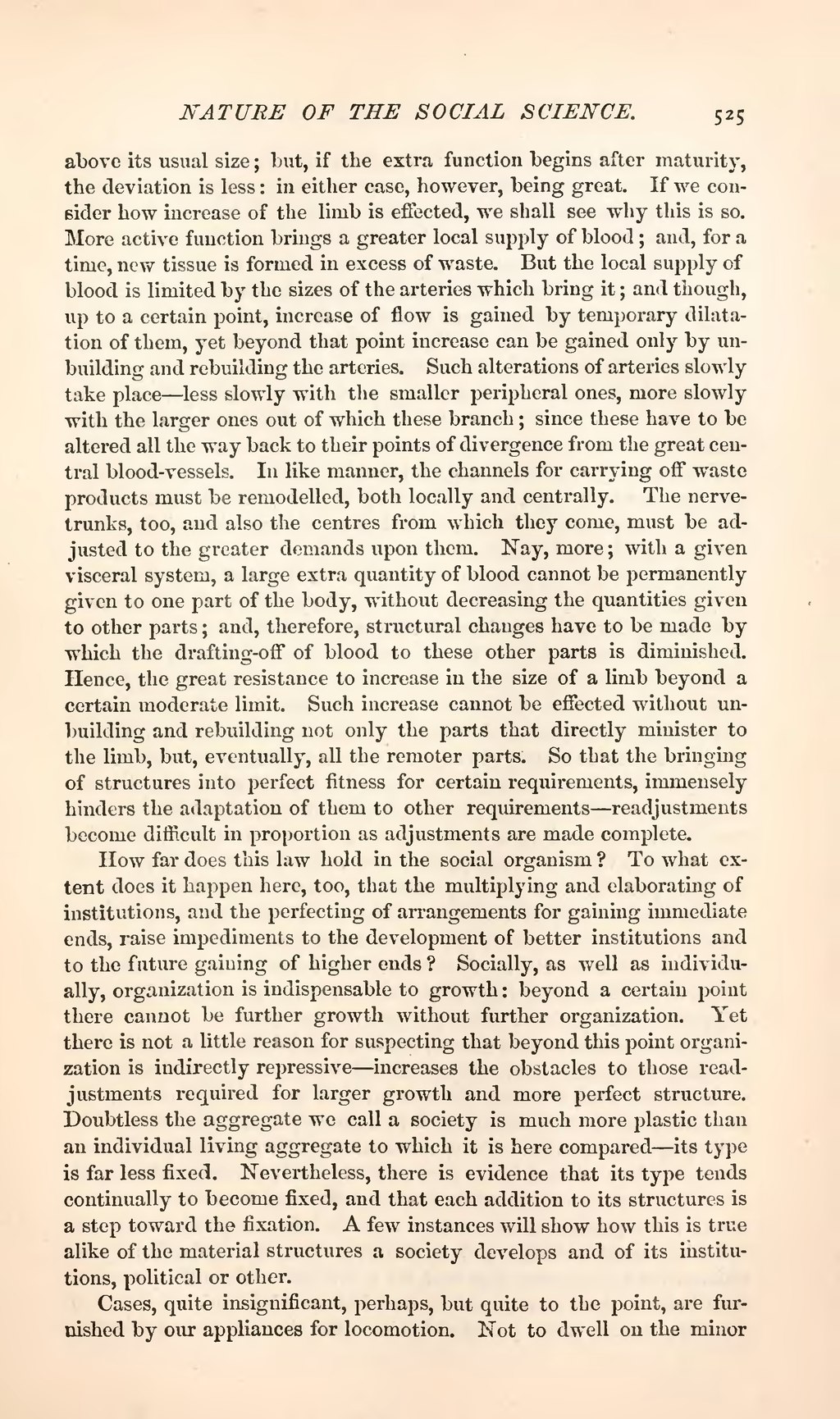above its usual size; but, if the extra function begins after maturity, the deviation is less: in either case, however, being great. If we consider how increase of the limb is effected, we shall see why this is so. More active function brings a greater local supply of blood; and, for a time, new tissue is formed in excess of waste. But the local supply of blood is limited by the sizes of the arteries which bring it; and though, up to a certain point, increase of flow is gained by temporary dilatation of them, yet beyond that point increase can be gained only by unbuilding and rebuilding the arteries. Such alterations of arteries slowly take place—less slowly with the smaller peripheral ones, more slowly with the larger ones out of which these branch; since these have to be altered all the way back to their points of divergence from the great central blood-vessels. In like manner, the channels for carrying off waste products must be remodelled, both locally and centrally. The nerve-trunks, too, and also the centres from which they come, must be adjusted to the greater demands upon them. Nay, more; with a given visceral system, a large extra quantity of blood cannot be permanently given to one part of the body, without decreasing the quantities given to other parts; and, therefore, structural changes have to be made by which the drafting-off of blood to these other parts is diminished. Hence, the great resistance to increase in the size of a limb beyond a certain moderate limit. Such increase cannot be effected without unbuilding and rebuilding not only the parts that directly minister to the limb, but, eventually, all the remoter parts. So that the bringing of structures into perfect fitness for certain requirements, immensely hinders the adaptation of them to other requirements readjustments—become difficult in proportion as adjustments are made complete.
How far does this law hold in the social organism? To what extent does it happen here, too, that the multiplying and elaborating of institutions, and the perfecting of arrangements for gaining immediate ends, raise impediments to the development of better institutions and to the future gaining of higher ends? Socially, as well as individually, organization is indispensable to growth: beyond a certain point there cannot be further growth without further organization. Yet there is not a little reason for suspecting that beyond this point organization is indirectly repressive—increases the obstacles to those readjustments required for larger growth and more perfect structure. Doubtless the aggregate we call a society is much more plastic than an individual living aggregate to which it is here compared—its type is far less fixed. Nevertheless, there is evidence that its type tends continually to become fixed, and that each addition to its structures is a step toward the fixation. A few instances will show how this is true alike of the material structures a society develops and of its institutions, political or other.
Cases, quite insignificant, perhaps, but quite to the point, are furnished by our appliances for locomotion. Not to dwell on the minor
